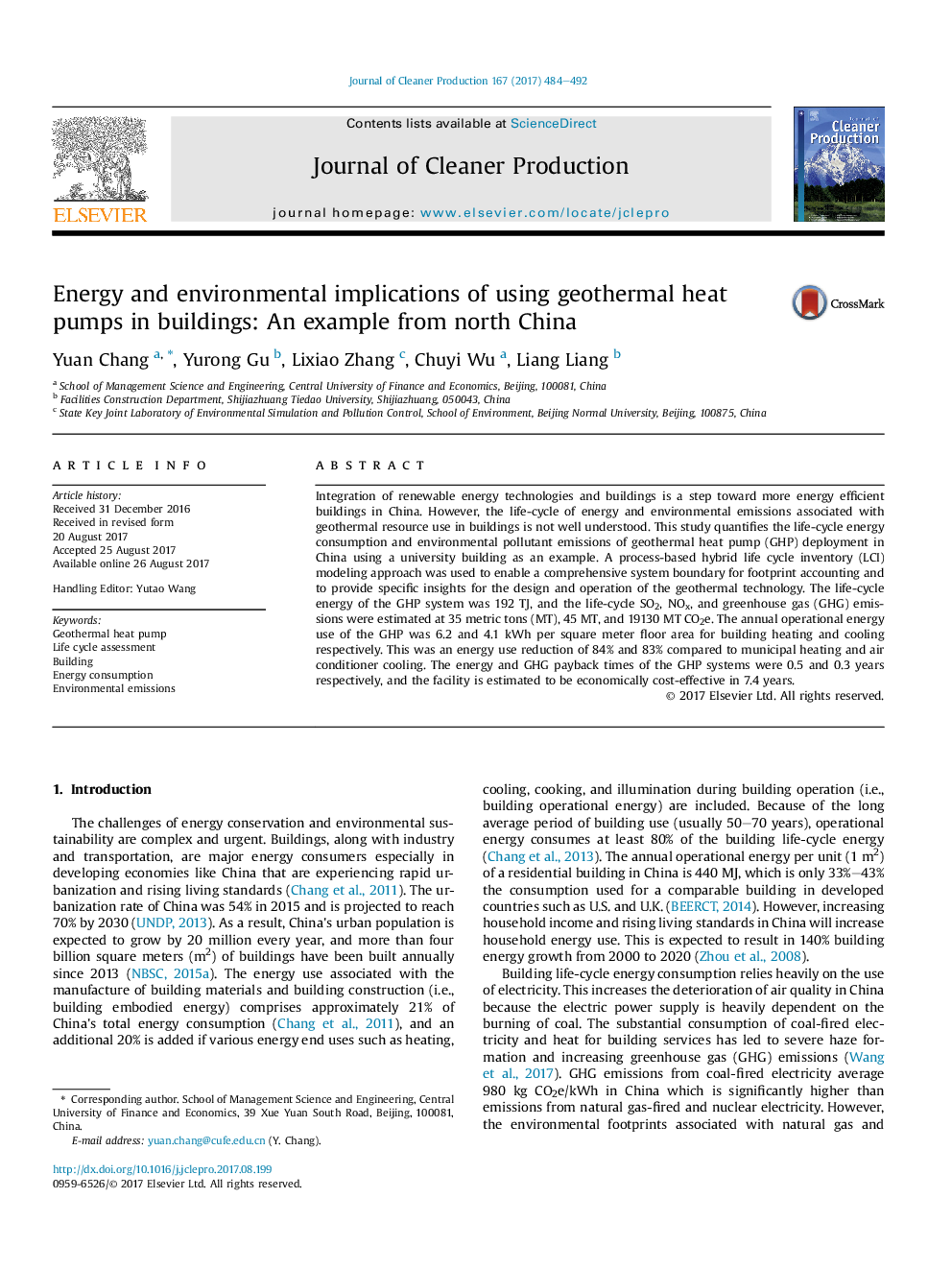| Article ID | Journal | Published Year | Pages | File Type |
|---|---|---|---|---|
| 5479466 | Journal of Cleaner Production | 2017 | 9 Pages |
Abstract
Integration of renewable energy technologies and buildings is a step toward more energy efficient buildings in China. However, the life-cycle of energy and environmental emissions associated with geothermal resource use in buildings is not well understood. This study quantifies the life-cycle energy consumption and environmental pollutant emissions of geothermal heat pump (GHP) deployment in China using a university building as an example. A process-based hybrid life cycle inventory (LCI) modeling approach was used to enable a comprehensive system boundary for footprint accounting and to provide specific insights for the design and operation of the geothermal technology. The life-cycle energy of the GHP system was 192Â TJ, and the life-cycle SO2, NOx, and greenhouse gas (GHG) emissions were estimated at 35 metric tons (MT), 45Â MT, and 19130Â MT CO2e. The annual operational energy use of the GHP was 6.2 and 4.1Â kWh per square meter floor area for building heating and cooling respectively. This was an energy use reduction of 84% and 83% compared to municipal heating and air conditioner cooling. The energy and GHG payback times of the GHP systems were 0.5 and 0.3 years respectively, and the facility is estimated to be economically cost-effective in 7.4 years.
Related Topics
Physical Sciences and Engineering
Energy
Renewable Energy, Sustainability and the Environment
Authors
Yuan Chang, Yurong Gu, Lixiao Zhang, Chuyi Wu, Liang Liang,
